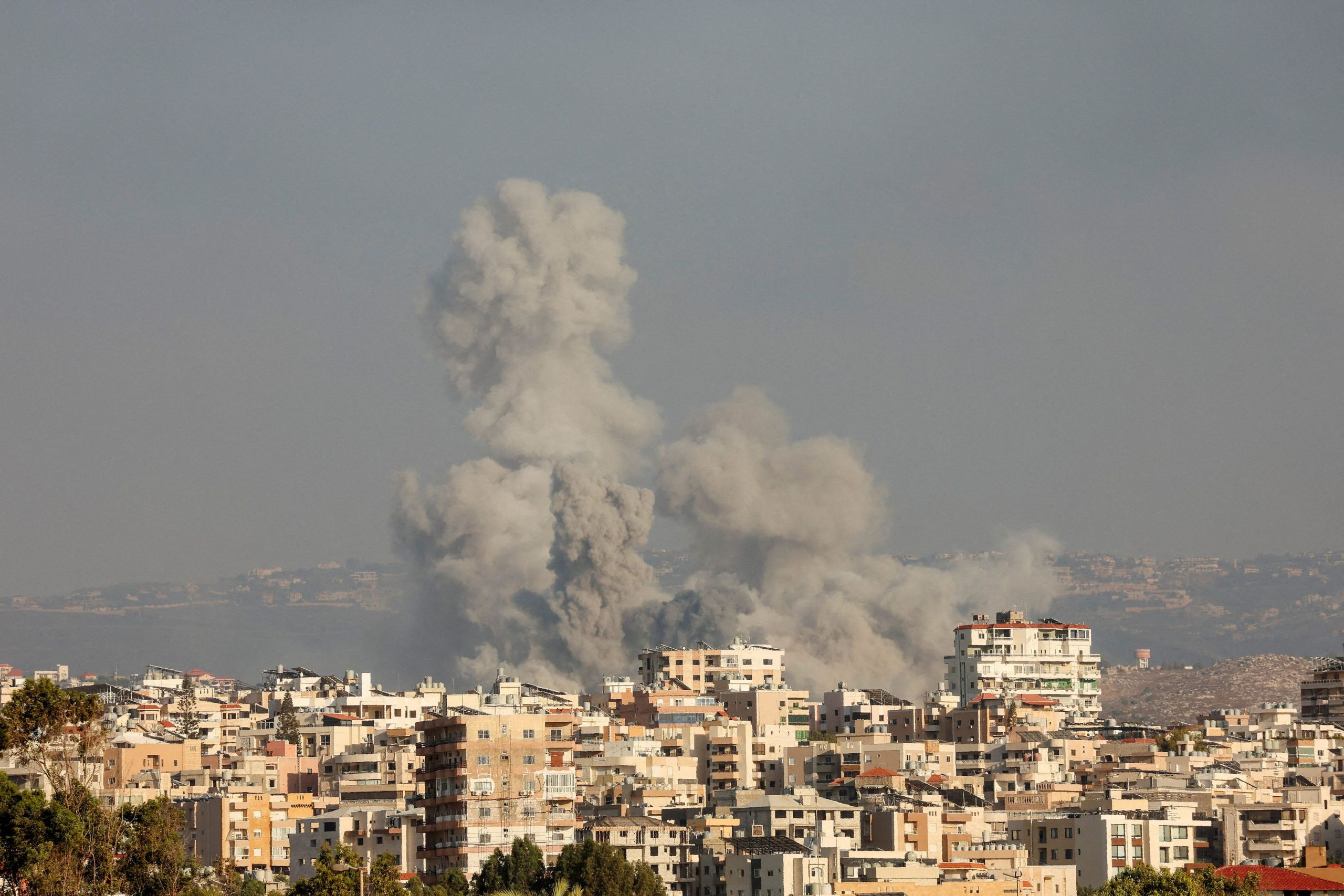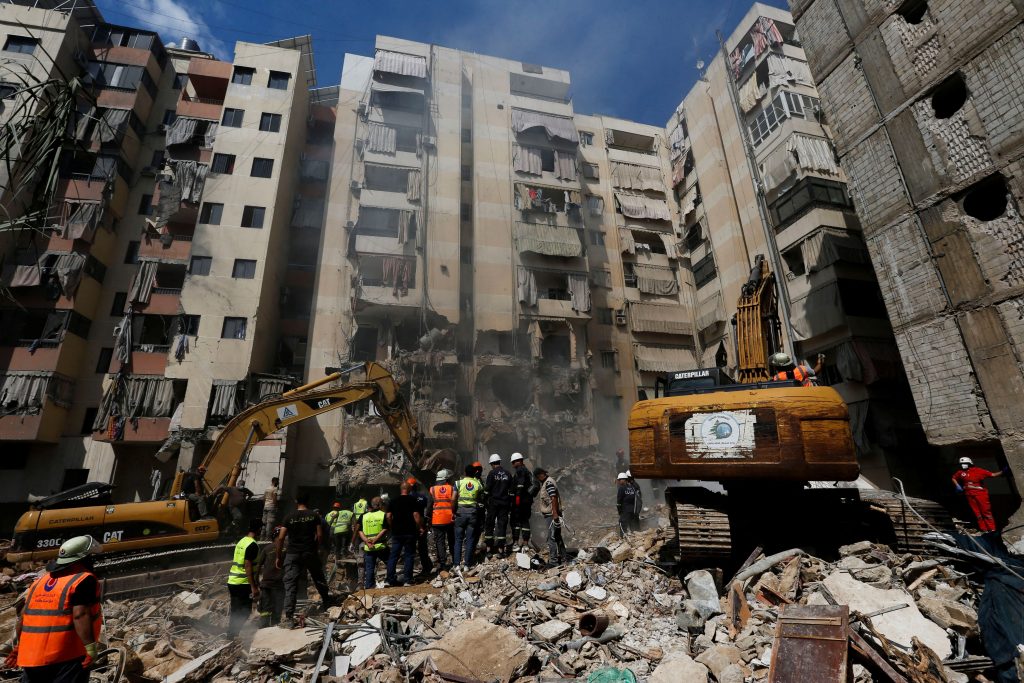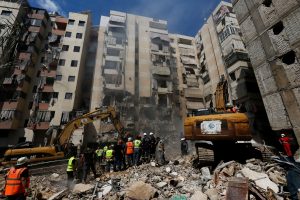Israeli strikes against Hezbollah in Lebanon killed almost 500 people, including dozens of women and children, and wounded more than 1,600, according to Lebanese authorities, in the deadliest wave of strikes since the current hostilities began in October.
The Israeli military said it launched strikes against more than 1,300 locations that targeted Hezbollah’s military infrastructure, including cruise missiles, medium- and short-range rockets and unmanned aerial vehicles, as well as militants. Israel also targeted Ali Karaki, a Hezbollah leader under U.S. counterterrorism sanctions, in an airstrike in Beirut on Monday, according to an Israeli official familiar with the matter. Hezbollah said that Karaki hadn’t been killed.
The Pentagon said Monday that it was sending additional forces to the Middle East, but wouldn’t say how many, for how long or for what mission.
“In light of increased tension in the Middle East and out of an abundance of caution, we are sending a small number of additional U.S. military personnel forward to augment our forces that are already in the region. But for operational security reasons, I’m not going to comment on or provide specifics,” said Air Force Maj. Gen. Pat Ryder, a Pentagon spokesman.
The additional forces are roughly two dozen troops who could help in the event of an evacuation, a defense official said.
In a Sept. 23 letter obtained by The Wall Street Journal, Israeli Foreign Minister Israel Katz urged the United Nations Security Council president to condemn recent “large-scale attacks” by Hezbollah and to enforce U.N. Security Council resolution 1701, which called for a withdrawal of armed groups from south of the Litani River.
Israel “is not interested in a full-scale war,” Katz wrote, but it will “take all necessary measures to protect ourselves.”
“While Israel has exercised remarkable restraint over the past 11 months, we will not tolerate the ongoing war of attrition that Hezbollah and its patron, Iran, are attempting to impose on the people of Israel,” Katz wrote.
Israeli military spokesman Daniel Hagari said the airstrikes would continue in the near term and told residents in part of Lebanon to stay away from areas that would be targeted, though he didn’t identify those exact locations.
“We advise civilians from Lebanese villages located in and next to buildings and areas used by Hezbollah for military purposes, such as those used to store weapons, to immediately move out of harm’s way for their own safety,” Hagari said.
Some residents and government officials in Lebanon reported receiving voice calls and text messages telling them to evacuate, including the minister of information, who said he received an evacuation call at his office.
Ghinage Hamieh, a 26-year-old who lives close to Nabatieh, a town in the south, said she received a phone call saying her location would be struck and that she should evacuate.
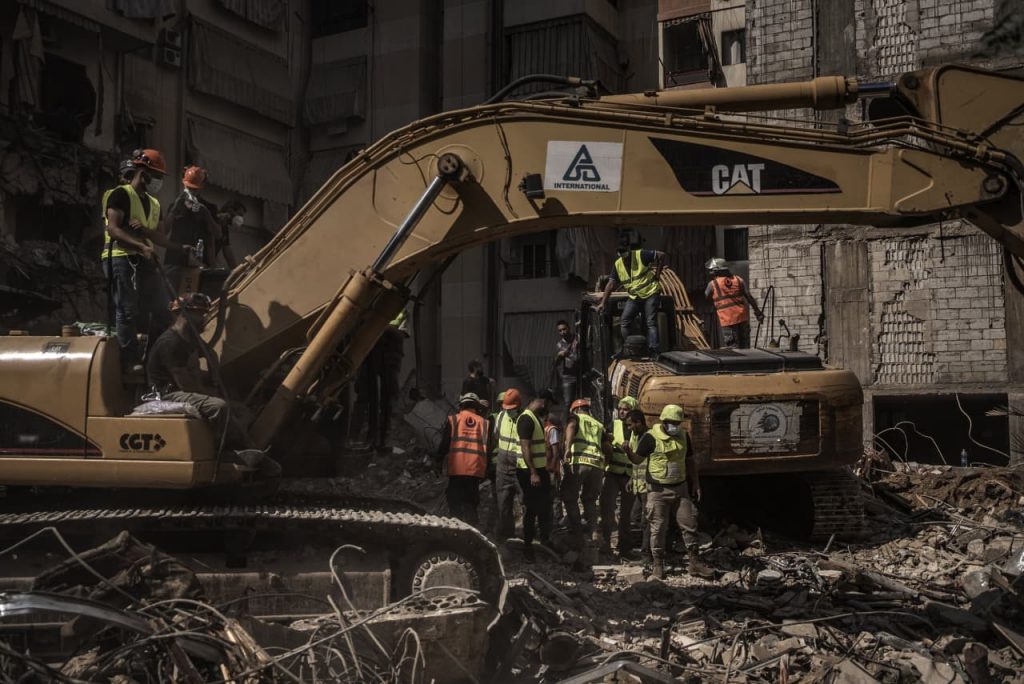
credits: Manu Brabo for WSJ, caption: Emergency workers use excavators to clear the rubble at the site of a strike in Beirut.
“We didn’t take this message seriously. We are in a war and this is one of its forms,” she said. Shortly after, her town was struck and she and her family began packing, debating whether to leave and where to go.
Israeli Prime Minister Benjamin Netanyahu said Monday that Israel was operating to “change the balance of power in the north.”
“We are destroying thousands of missiles and rockets that are pointed towards cities in Israel and Israeli citizens,” Netanyahu said.
The Israeli government on Monday approved a one-week “special situation” for the country, which gives the government the power to impose restrictions on communities due to the security situation. Such restrictions already exist in northern Israel near the border with Lebanon but have now been expanded.
Hezbollah has fired some 150 projectiles at northern Israel in the past 24 hours, according to the Israeli military. More than 8,800 rockets, missiles and drones have been fired by Hezbollah into Israel since Oct. 8, according to Israel. The Israeli military has also struck Lebanon more than 8,000 times by air, drone, missile and artillery in the same period, according to the nonprofit Armed Conflict Location and Event Data.
Tensions between Israel and Hezbollah have escalated after a series of severe blows to the U.S.-designated terrorist group last week. An Israeli strike on Friday killed the head of Hezbollah’s elite Radwan Force and other commanders, days after explosions of walkie-talkies and pagers killed dozens and injured thousands in an Israeli attack. The escalation has raised concerns of all-out war between the two sides, which had previously engaged in tit-for-tat strikes across the border.
Israel’s somewhat vague messaging to Lebanese civilians to evacuate swaths of territory ahead of bombardment echoes evacuation orders issued in the Gaza Strip throughout the war. In October last year, Israel urged more than one million civilians to leave the northern part of the Gaza Strip within 24 hours for the south. Months later, hundreds of thousands of Palestinians, many of whom were already displaced, fled the southern city of Rafah after evacuation orders were issued ahead of a major Israeli offensive.
The Israeli military says evacuation orders are intended to move civilians out of harm’s way.
Tens of thousands of Israelis and Lebanese have evacuated from their homes on both sides of the border as a result of the fighting.
Israel recently added a new official war goal: ensuring that some 60,000 evacuated residents of northern Israel can return to their homes. It says it is trying to do so by pushing Hezbollah back from the border and degrading Hezbollah’s military capabilities, which include long-range missiles.
“We will do whatever is needed to return the residents of the north home safely,” Hagari, the Israeli military spokesman, said Monday.
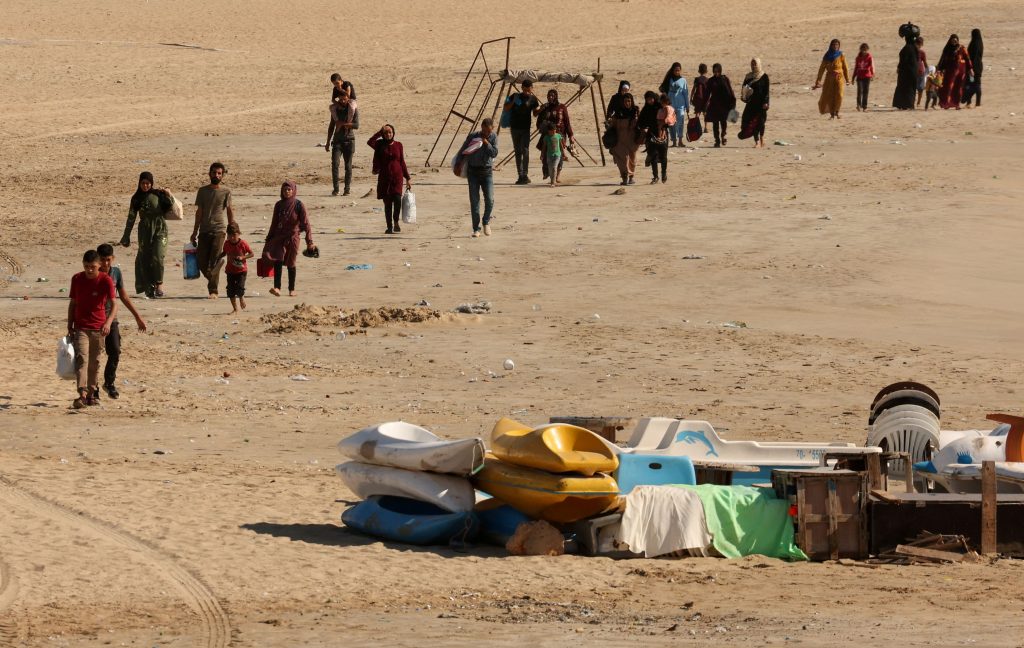
People carry belongings at a beach as they flee, amid ongoing cross-border hostilities between Hezbollah and Israeli forces, in Tyre, southern Lebanon September 23, 2024. REUTERS/Aziz Taher TPX IMAGES OF THE DAY
Israel’s aim in its latest offensive is likely in part to hinder Hezbollah’s ability to launch a retaliatory attack against Israel for its recent pager operation and assassinations of senior Hezbollah officials, said Randa Slim, director of the Conflict Resolution and Track II Dialogues Program at the Middle East Institute, a think tank in Washington, D.C. The Israeli offensive could also force Hezbollah to negotiate and agree to reduce its military presence on Lebanon’s southern border, she said.
“It takes two to go to war, and so far Hezbollah has been quite restrained in its responses. Is this the beginning of a full war? It depends on what Hezbollah does next,” Slim said. “But the situation is teetering on catastrophe. It’s not clear what the red lines are anymore, and that risks parts of Lebanon soon facing a reality akin to what we’ve seen in Gaza.”
Hezbollah says that its attacks against Israel since Oct. 8 are in solidarity with Palestinians in Gaza and that it will stop firing on Israel when the conflict ends in Gaza , where tens of thousands of Palestinians have been killed.
Israel launched its war against Hamas in Gaza after the Hamas-led Oct. 7 attacks in southern Israel, in which approximately 1,200 people were killed and around 250 taken hostage. Some 97 people taken on Oct. 7 remain held in Gaza —many of whom have died there—with cease-fire negotiations stalemated. Many family members of hostages say they fear that Israel moving on to a war with Hezbollah before securing a cease-fire-for-hostages deal in Gaza will seal the fate of their relatives.
The U.S. State Department on Sunday urged American citizens to leave Lebanon while commercial travel options remain available. It also said that those who choose to remain should be prepared to shelter in place if the situation deteriorates further.
The USS Harry S. Truman aircraft carrier and its accompanying ships left its Norfolk, Va., home port Monday for the Middle East, the Pentagon said. The U.S. has kept a carrier strike group in the region since last fall, when Houthi forces in Yemen began launching attacks on ships transiting the Red Sea, effectively shutting down one of the most important waterways. Houthi officials have said they are aiming only at ships linked to Israel, but the Pentagon has tracked attacks on vessels flagged or owned in other countries.
—Adam Chamseddine, undefined and Summer Said contributed to this article.
Write to Anat Peled at anat.peled@wsj.com and Omar Abdel-Baqui at omar.abdel-baqui@wsj.com
